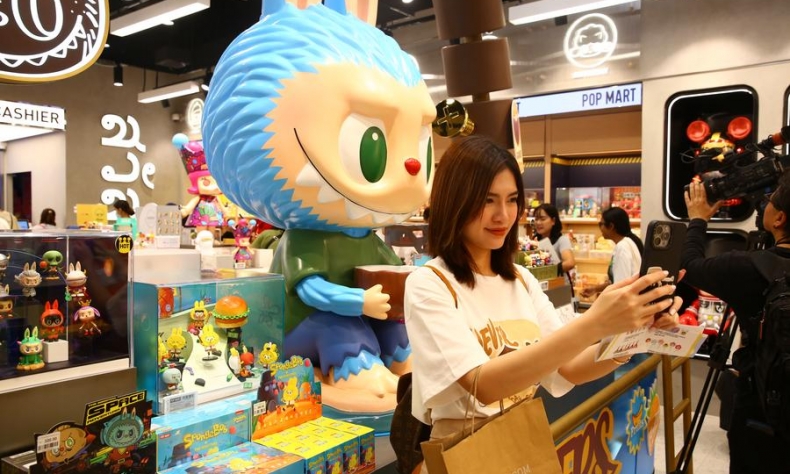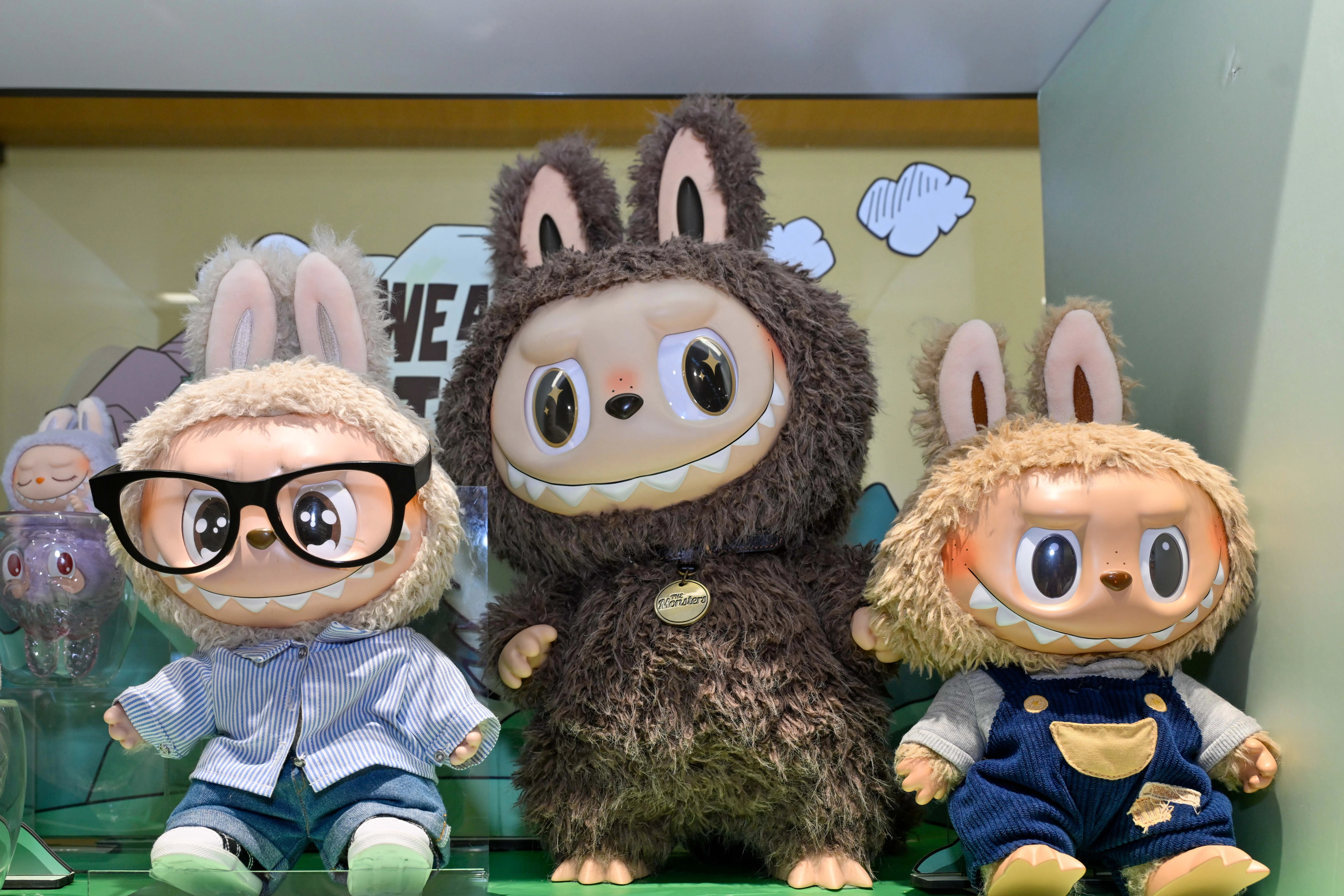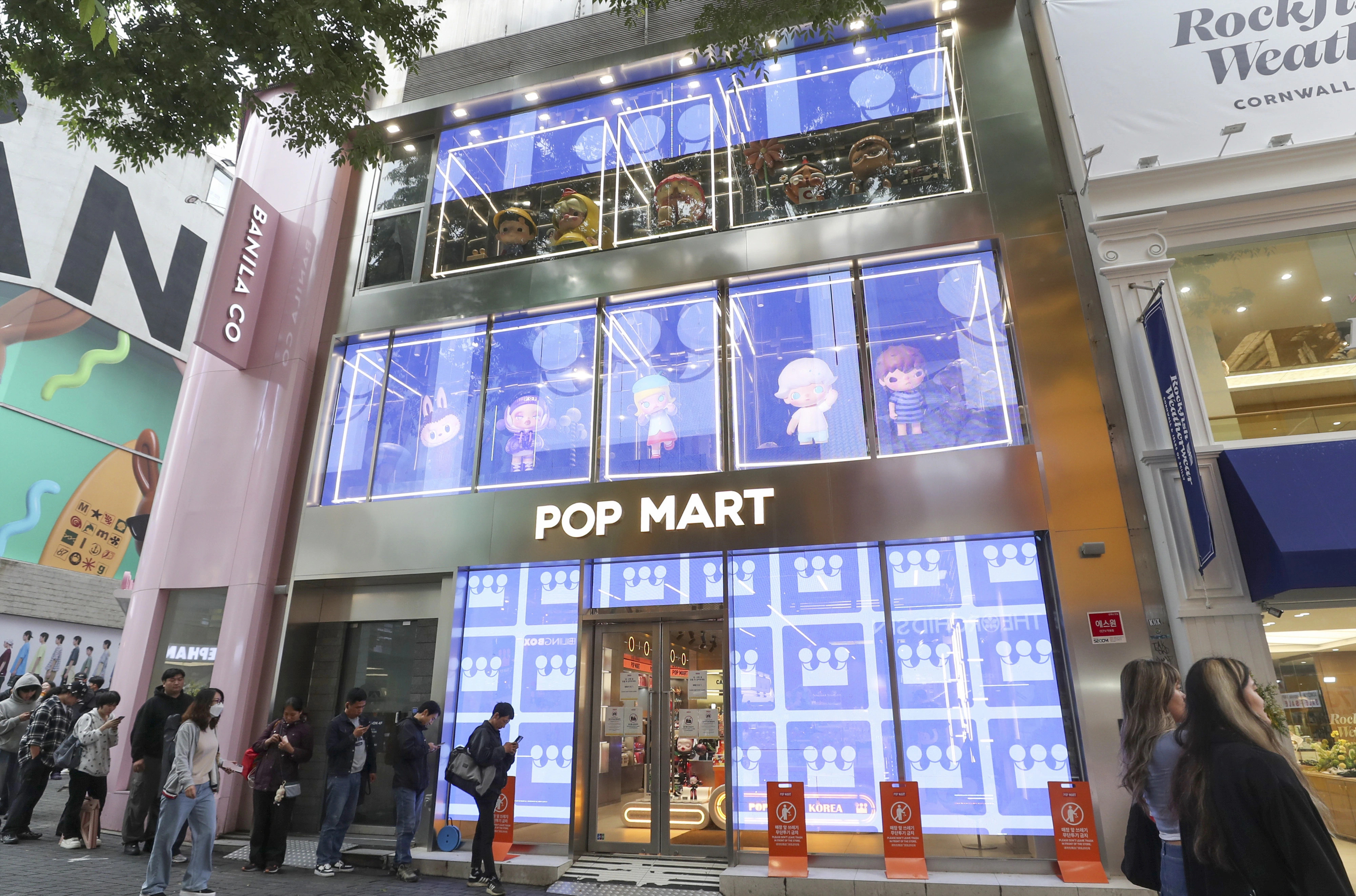LABUBU and the New Cultural Alchemy: When a Toy Speaks the World’s Shared Language

As global tastes increasingly embrace Eastern aesthetics, China’s cultural industry is charting a new course – one where open creative platforms facilitate cross-cultural dialogue through shared emotional language that transcends geographic labels.
From New York to Bangkok, London to Seoul, crowds are lining up – sometimes overnight – for a chance to own Labubu, the fuzzy, snaggletoothed elf with mischievous eyes and pointed ears. At the Louvre in Paris, visitors now strike poses with Labubu-branded shopping bags alongside the Mona Lisa, blurring the boundaries between pop culture phenomenon and high art.
This adorably grotesque creation by Chinese toy giant Pop Mart has taken global markets by storm, fueled by celebrity endorsements and social media hype. When soccer legend David Beckham shared a photo of his daughter’s gift – a brown Labubu dangling from his leather bag – on May 22, it cemented the toy’s status as a must-have accessory.
With its jagged grin and asymmetrical eyes, Labubu has emerged as Pop Mart’s breakout star, revolutionizing the collectibles market. The brand’s meteoric rise was further accentuated on April 25 when its app leapt a whopping 114 positions to top the U.S. App Store shopping chart, ranking fourth among all free apps – an unprecedented feat for a toy company.
This global phenomenon manifests uniquely across cultures: Thailand’s tourism authorities crowned Labubu its official “Amazing Thailand Experience Explorer”; Singapore’s Merlion-inspired edition vanished from shelves mere hours upon release; Spain’s plazas pulse with Labubu’s theme song. Defying conventional cuteness, this subversive “little monster” has become a cultural lightning rod for Gen Z worldwide.
The speed with which this homegrown Chinese IP achieved universal appeal has stunned industry observers. As commentator Ding Gang noted, its success reveals a long-overlooked truth: beneath the surface of cultural differences, there exists a profound universality in human emotions.
Without a tie-in cinematic backstory or animated series, Labubu has accomplished what few IPs achieve – simultaneous domination across five continents. The toy’s genius lies in bypassing cultural filters to trigger immediate, visceral connection – a grinning elf that speaks the global language of playful rebellion.
Labubu’s design – cute and mischievous, harmless yet slightly rebellious, vulnerable yet independent – evokes emotional resonance across cultural boundaries. Global consumers, regardless of background, understand and feel the nuanced emotions conveyed by Labubu’s expressions in the same manner.

Many analysts believe Labubu’s global appeal and status as a leading cultural icon stem from its unique design language, well-executed marketing strategy, and the widespread and instantaneous amplification effect of social media.
Labubu’s core sales model revolves around “blind boxes,” an innovative retail strategy that transforms simple purchases into thrilling emotional experiences. The randomized nature fuels collector obsession, creating communities bound by the shared thrill of the hunt and driven by the collector mindset that cherishes complete sets.
“Labubu’s global breakout reflects China’s progress in original pop toy design,” said Chen Rui, associate professor at the Communication University of China.
Celebrity influence has also been crucial to Labubu’s rise. For example, in Thailand, endorsements from royalty, officials, and stars who posted photos with Labubu on social media helped turn it into a cultural phenomenon, boosting its fame. Moreover, Labubu thrives on platforms like TikTok, Instagram, and YouTube, where unboxing videos and collector showcases generate exponential exposure.
As Hong Yong, deputy researcher at the Chinese Academy of International Trade and Economic Cooperation, noted, “User interactions and shares on social platforms create powerful influence, spreading pop toy culture. Direct brand-consumer connections enable real-time feedback and strategy tweaks – this interactivity and immediacy fuel Chinese pop toys’ global boom.”
Chinese brands have mastered a crucial insight: for Gen Z, toys are no longer just playthings – they’re emotional companions. Unlike traditional toys, Pop Mart’s creations like Labubu and Crybaby tap into the rising global trend of “emotional consumption,” where purchases are driven by personal resonance rather than utility. A China Consumers Association report confirms that this shift heavily influences young buyers’ decisions. As Thai collector Tanya explains: “When I first saw Crybaby’s tearful eyes on social media, it felt like looking at my own reflection. Instead of making me sad, it makes me want to comfort it, like healing a part of myself.”
Pop Mart’s journey from Molly’s early success to Labubu’s global takeover demonstrates how meticulously crafted IPs can forge profound emotional bonds. By blending artistry with what founder Wang Ning calls a “born-global” design philosophy, the company has transformed its characters into a cross-cultural language of emotion. “IP isn’t just our product, it’s how we converse with the world,” Wang noted.

The strategy is paying off spectacularly. JPMorgan Chase recently declared Labubu a “super IP,” with May 2025 search volumes eclipsing the juggernaut that is Hello Kitty. The bank forecasts Pop Mart’s overseas sales to surge 152 percent this year, building on 2024’s explosive growth where revenue hit RMB 13.04 billion (up 106.9 percent year on year) with 500-plus stores and 2,300-plus vending machines spanning 30-plus countries.
Pop Mart exemplifies a trendy Chinese toy brand’s successful foray into the global market, but it is far from being the only one. TOP TOY has established over 280 international stores, while 52TOYS achieved explosive growth in 2024 – 300 percent in Thailand and 220 percent across Southeast Asia. This overseas expansion has become the primary growth engine for China’s burgeoning trendy toy industry.
This global success is underpinned by China’s formidable manufacturing ecosystem. As the world’s toy production powerhouse, China offers an unparalleled combination of complete supply chains and industrial clusters. The Dongguan production hub alone – home to over 4,000 toy manufacturers and 1,500 supporting enterprises – demonstrates this advantage. Responsible for 85 percent of China’s trendy toys and a quarter of global anime merchandise, Dongguan supplies over 70 percent of Pop Mart’s products.
Complementing this manufacturing might is Hong Kong’s creative prowess. The city’s vibrant art community and design platforms have been instrumental in elevating Chinese toys from simple products to cultural icons. It was at a Hong Kong exhibition that Pop Mart’s founder discovered Labubu’s designer, forging the perfect “art + industry” synergy that has redefined value creation in the sector.
Industry observers see the Labubu phenomenon as heralding a “new age of exploration” for Chinese IPs. Moving beyond stereotypical Eastern motifs, these brands are crafting universally resonant narratives. As global tastes increasingly embrace Eastern aesthetics, China’s cultural industry is charting a new course – one where open creative platforms facilitate cross-cultural dialogue through shared emotional language that transcends geographic labels.
 Facebook
Facebook
 Twitter
Twitter
 Linkedin
Linkedin
 Google +
Google +










